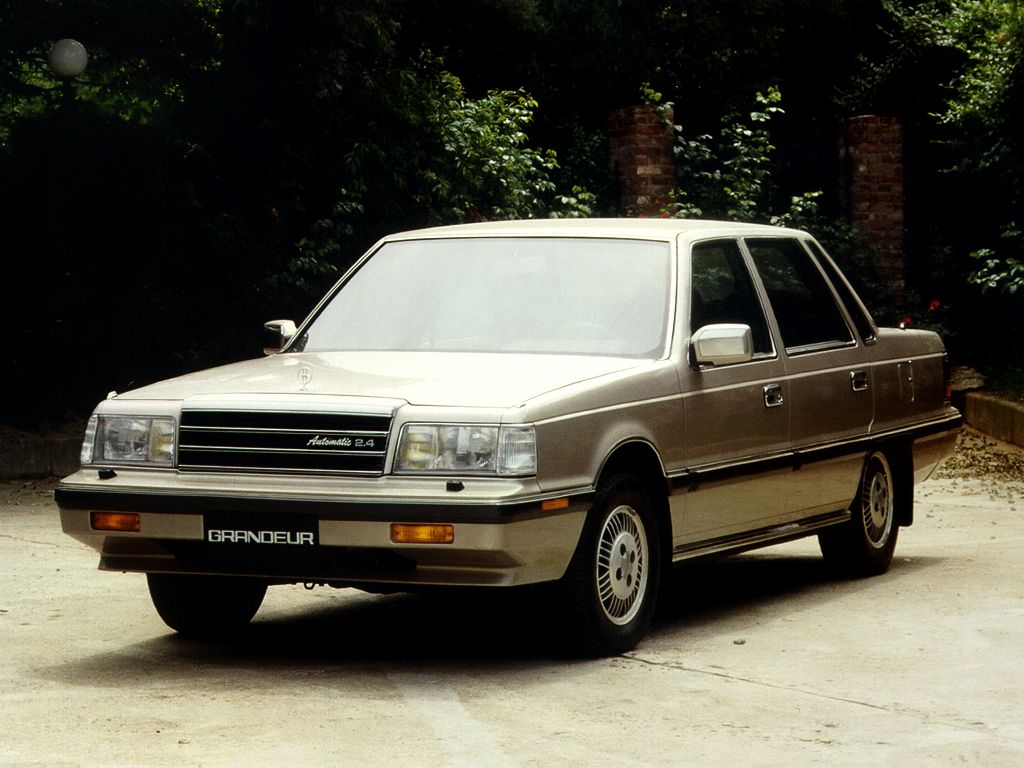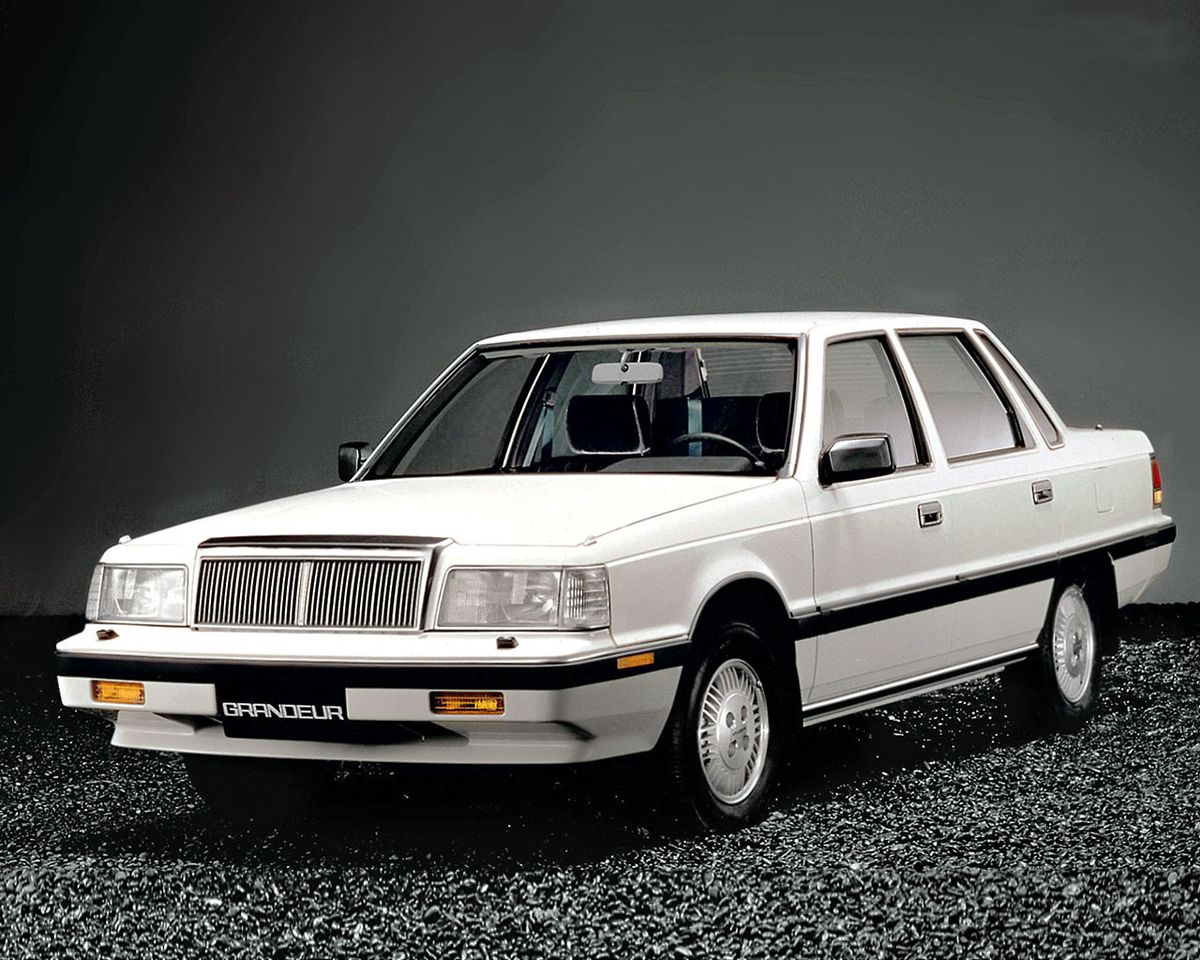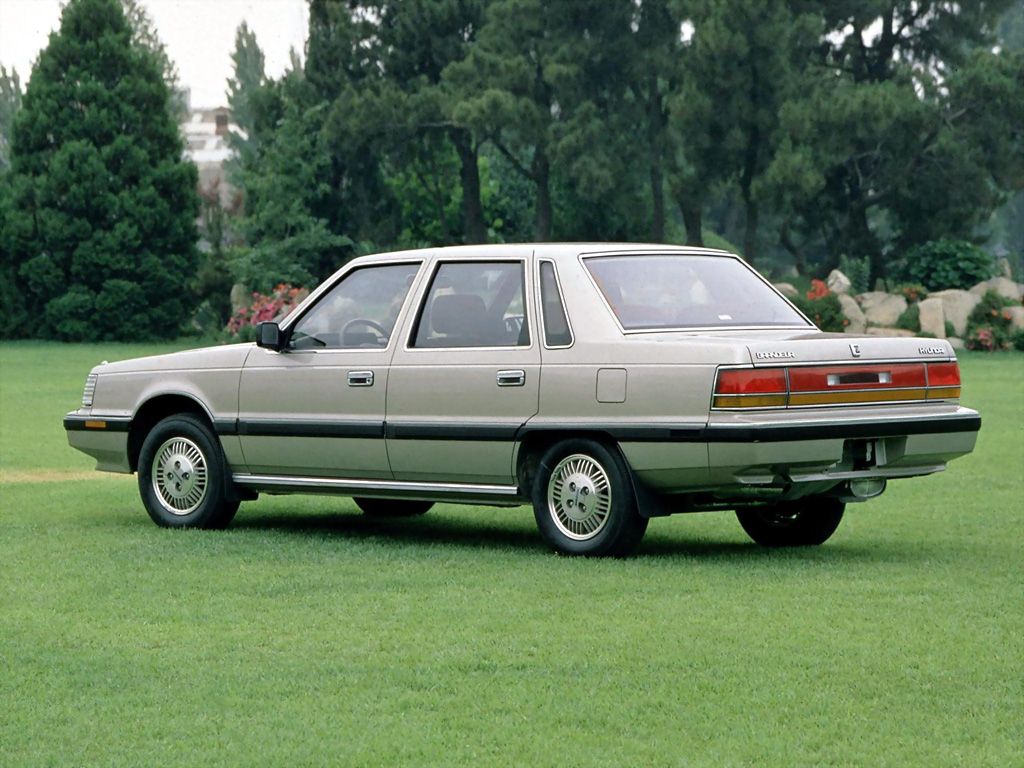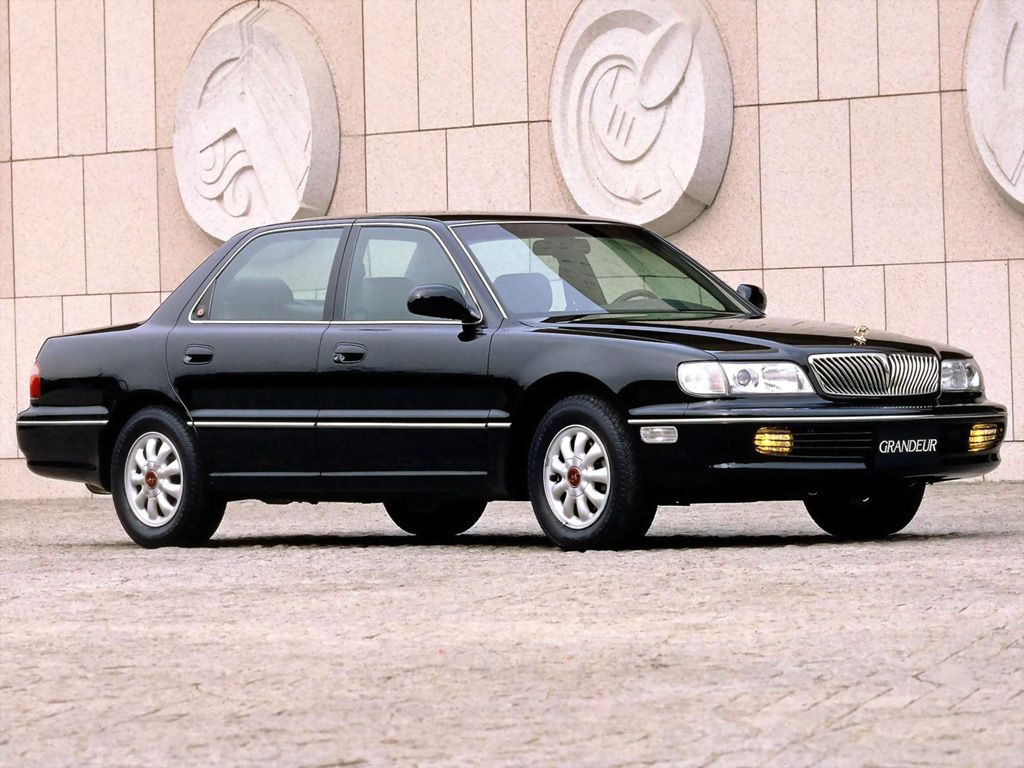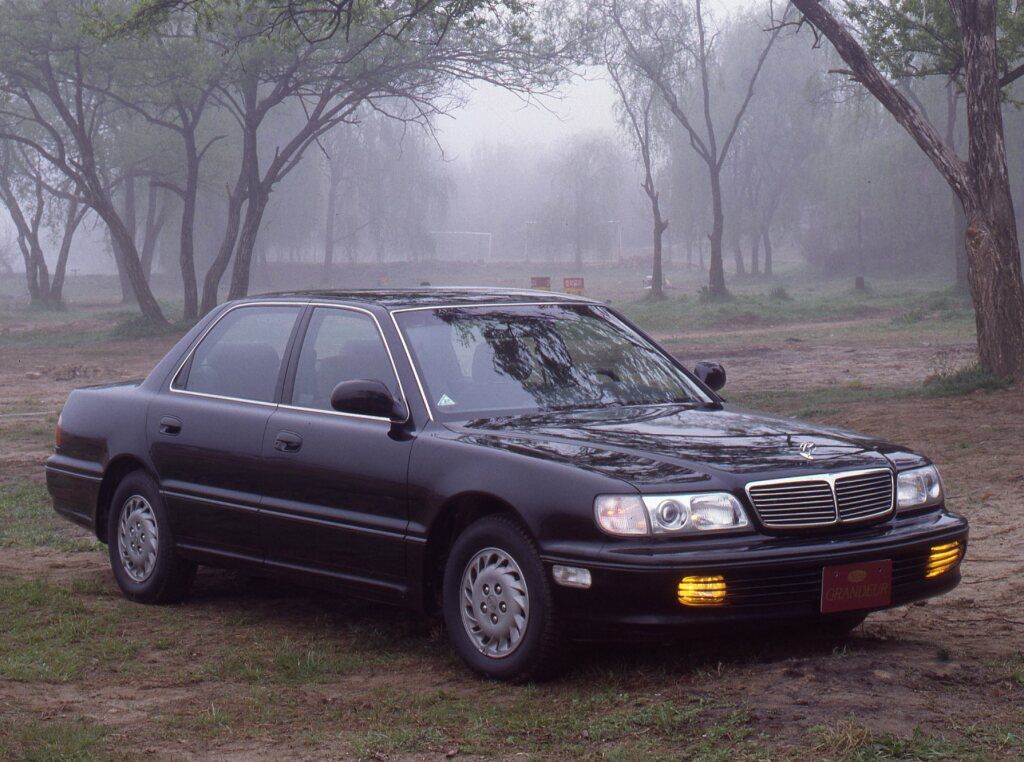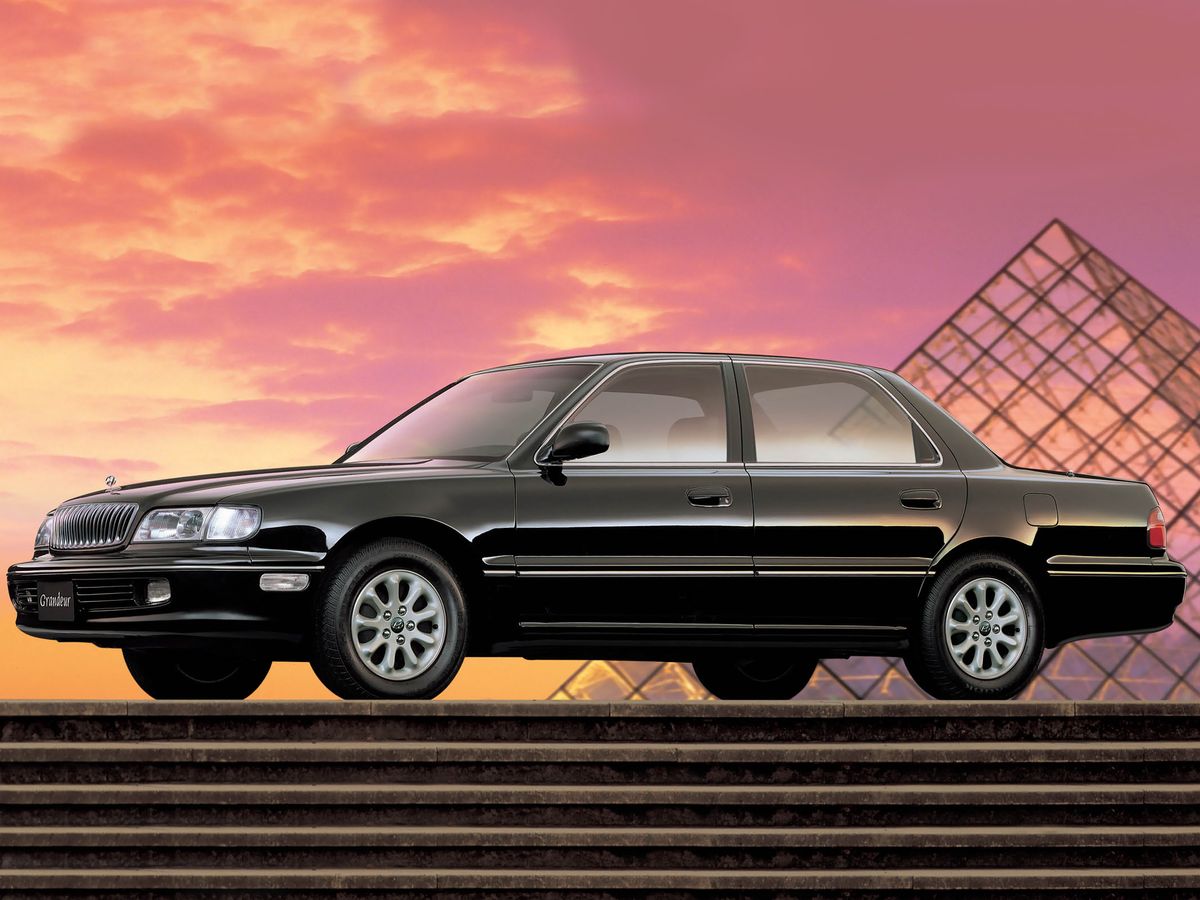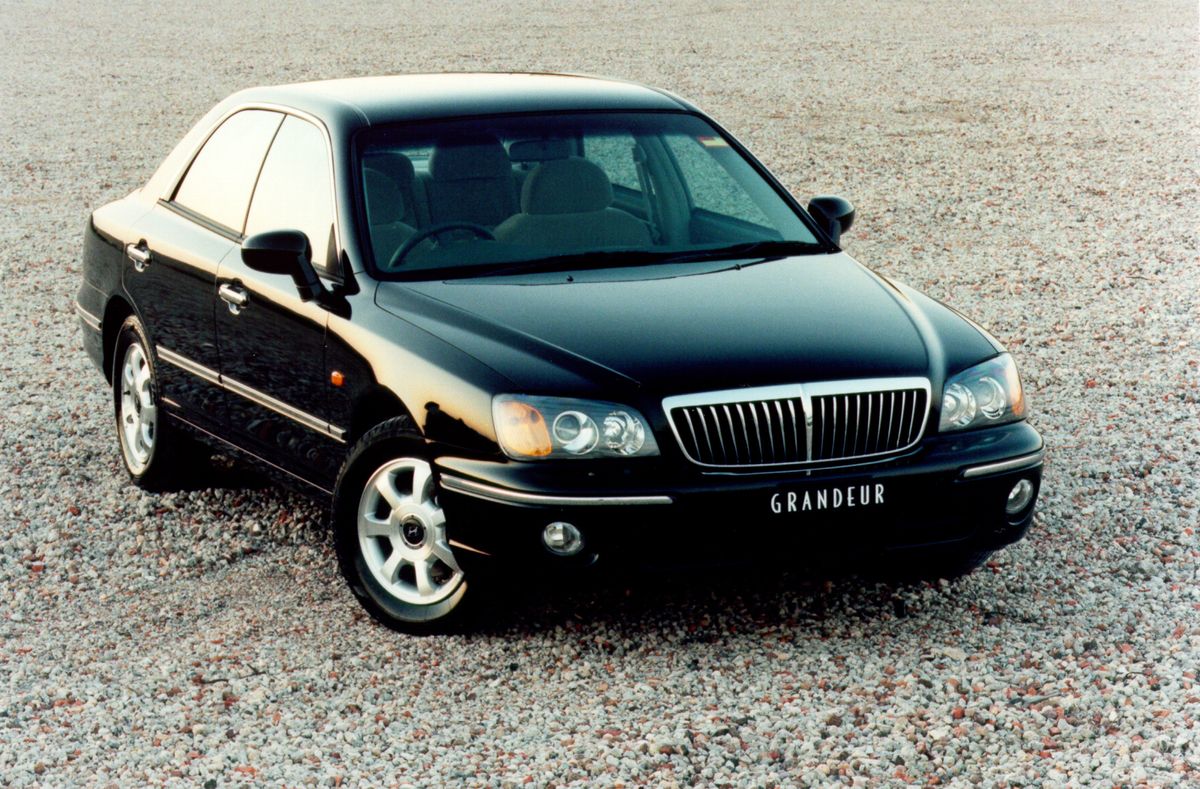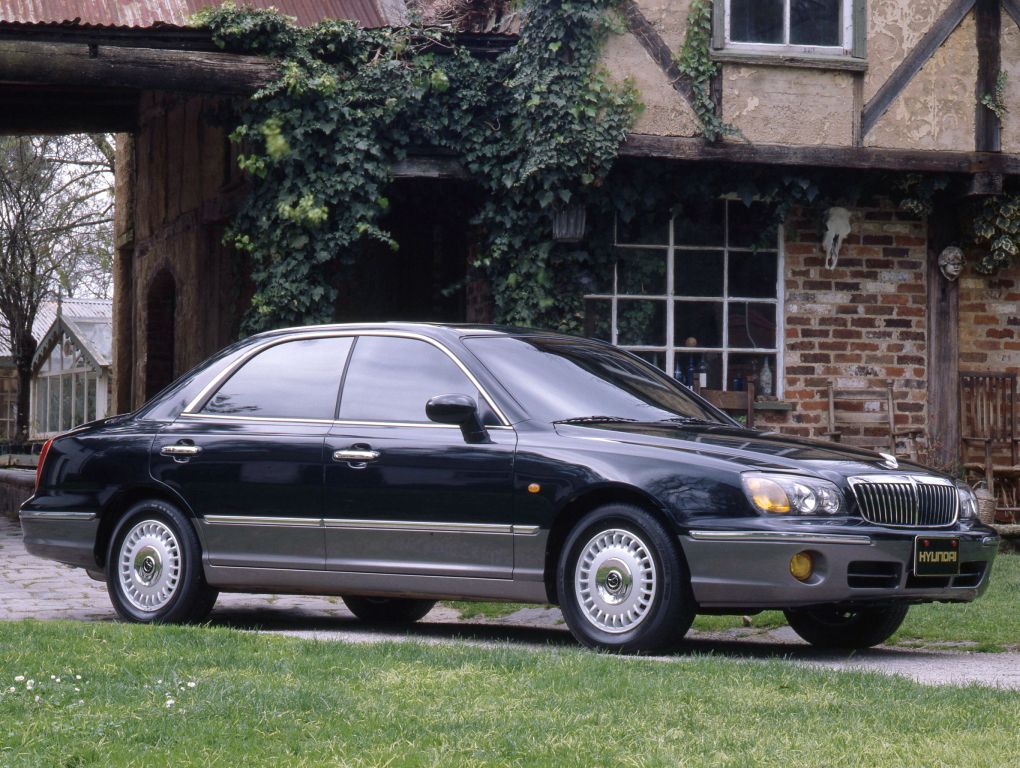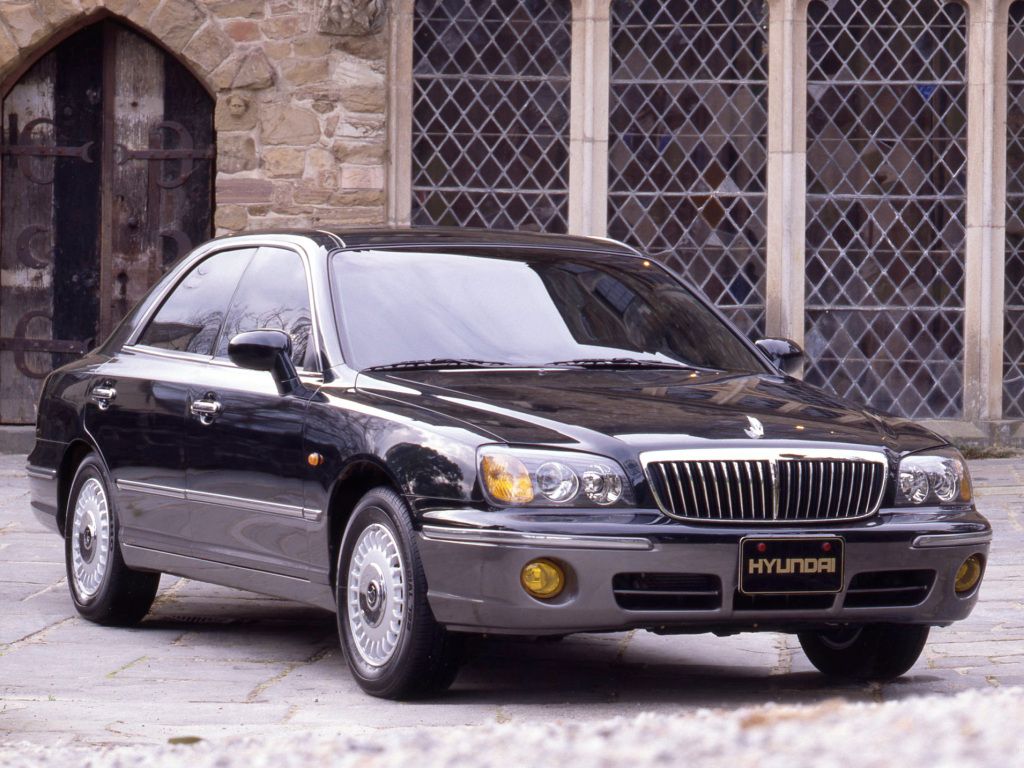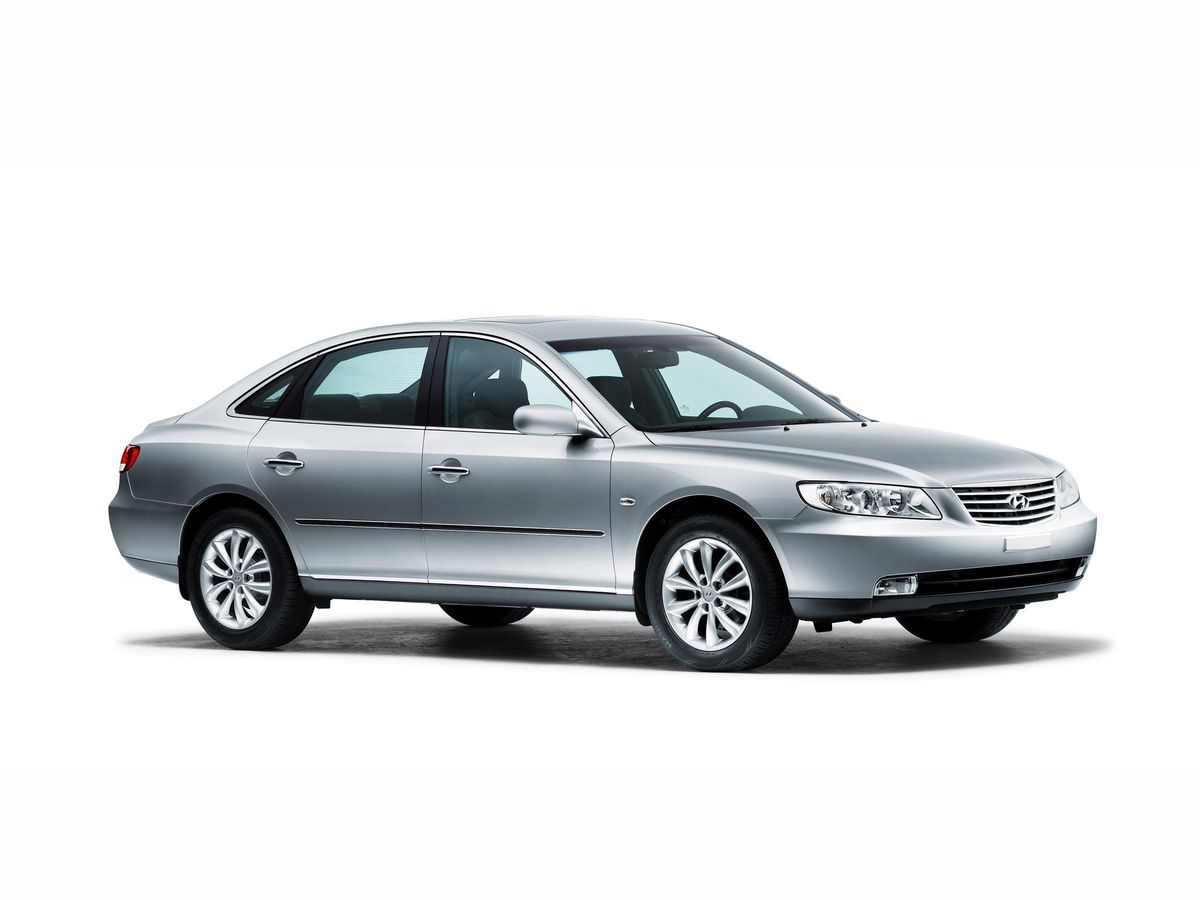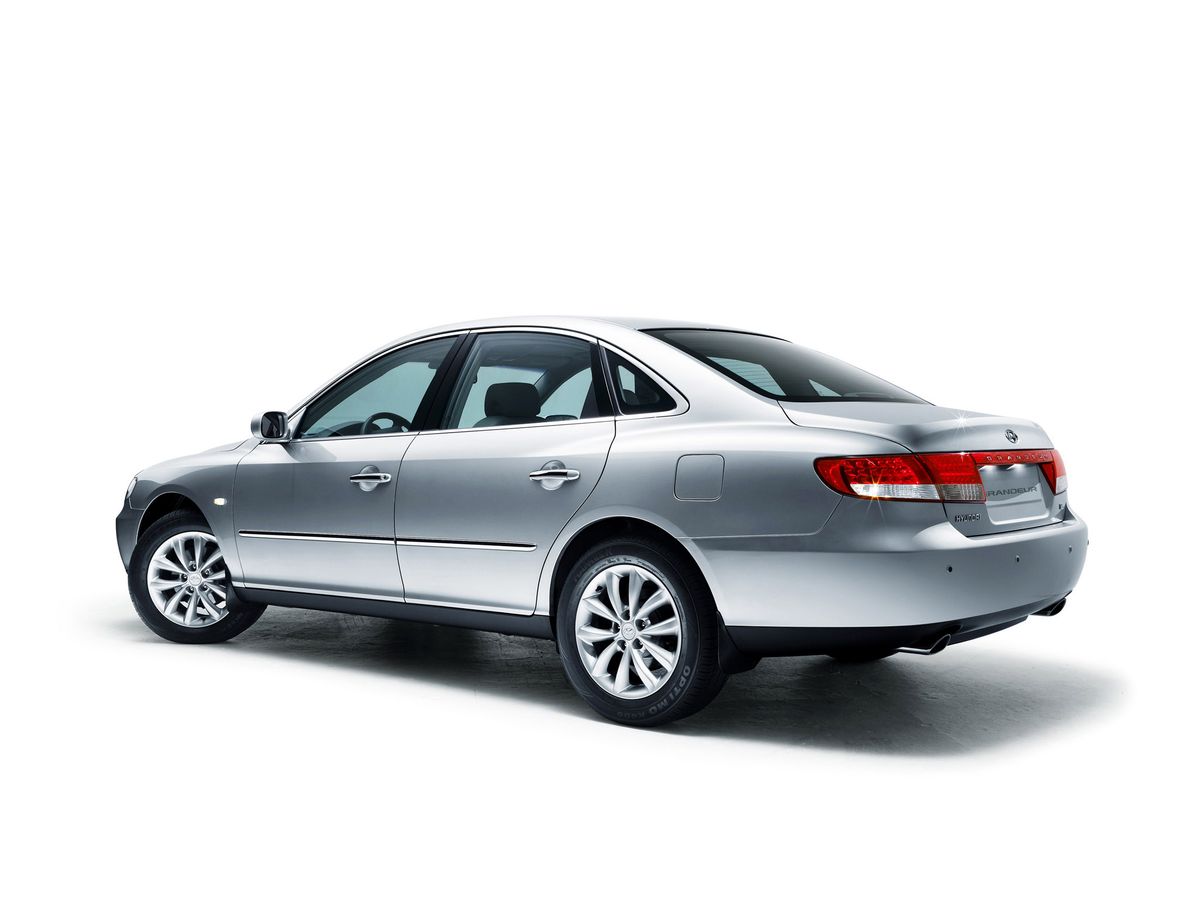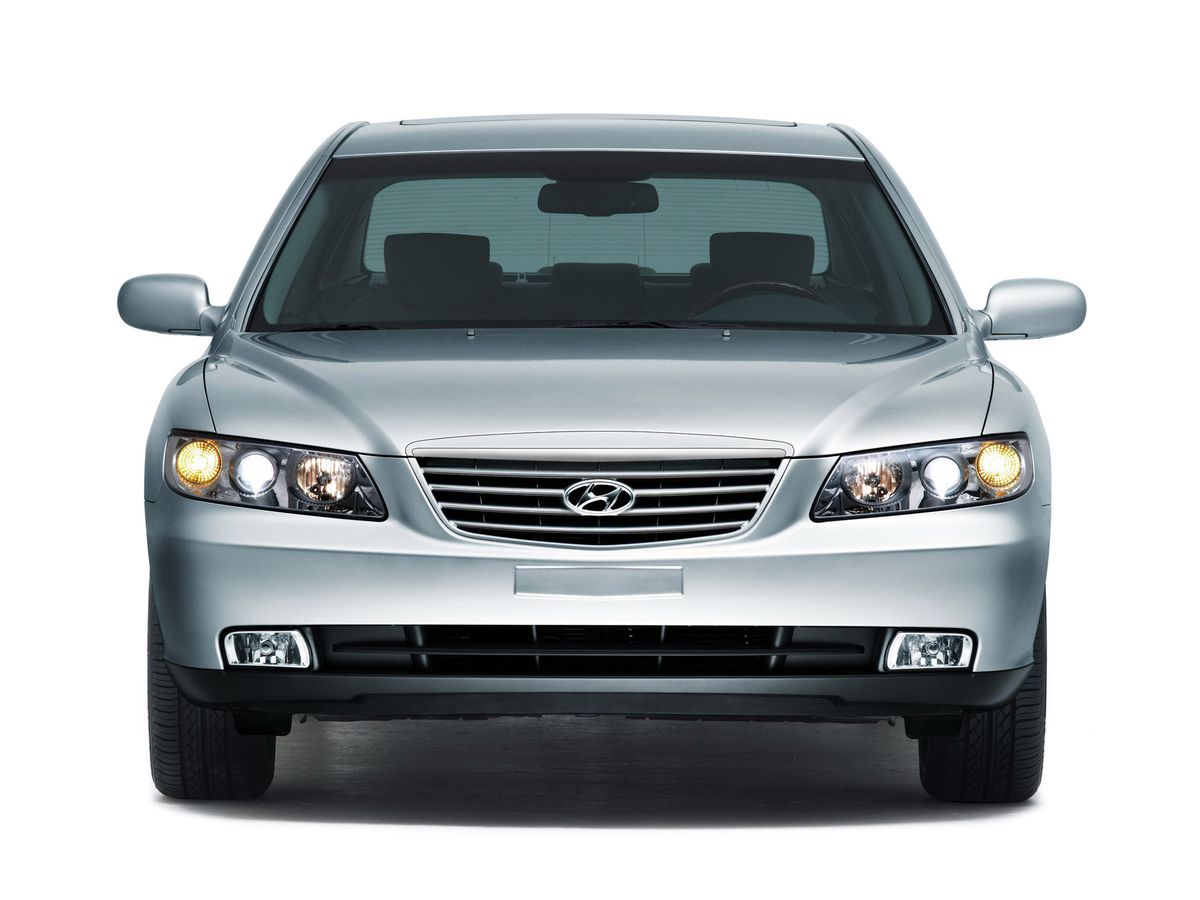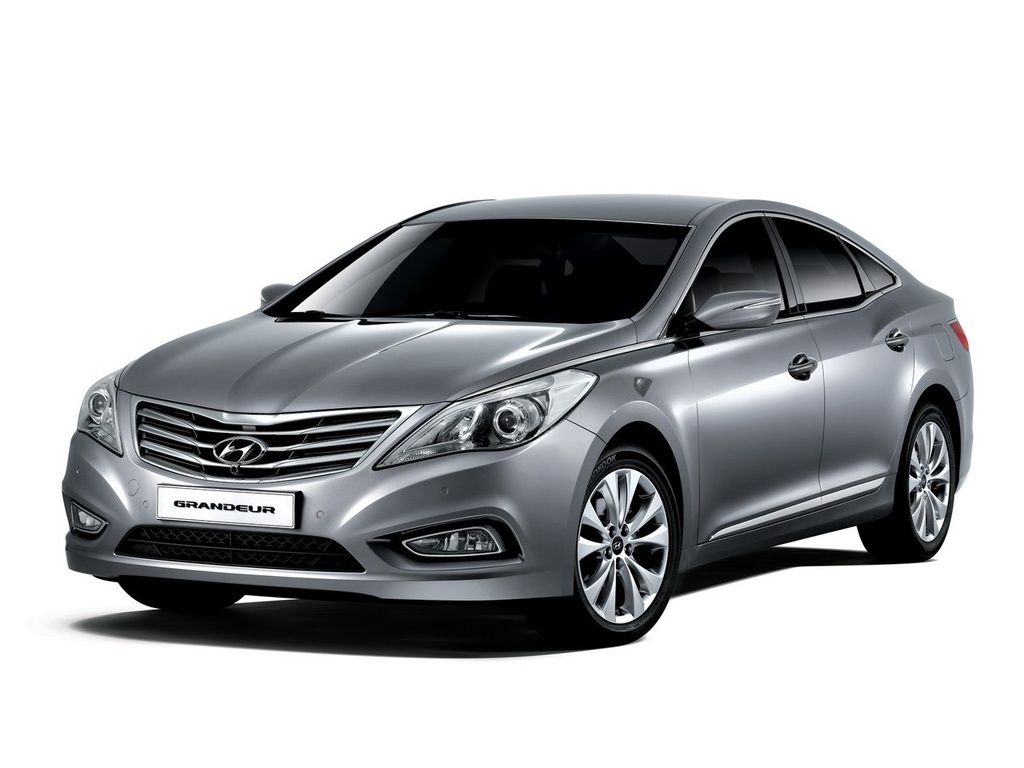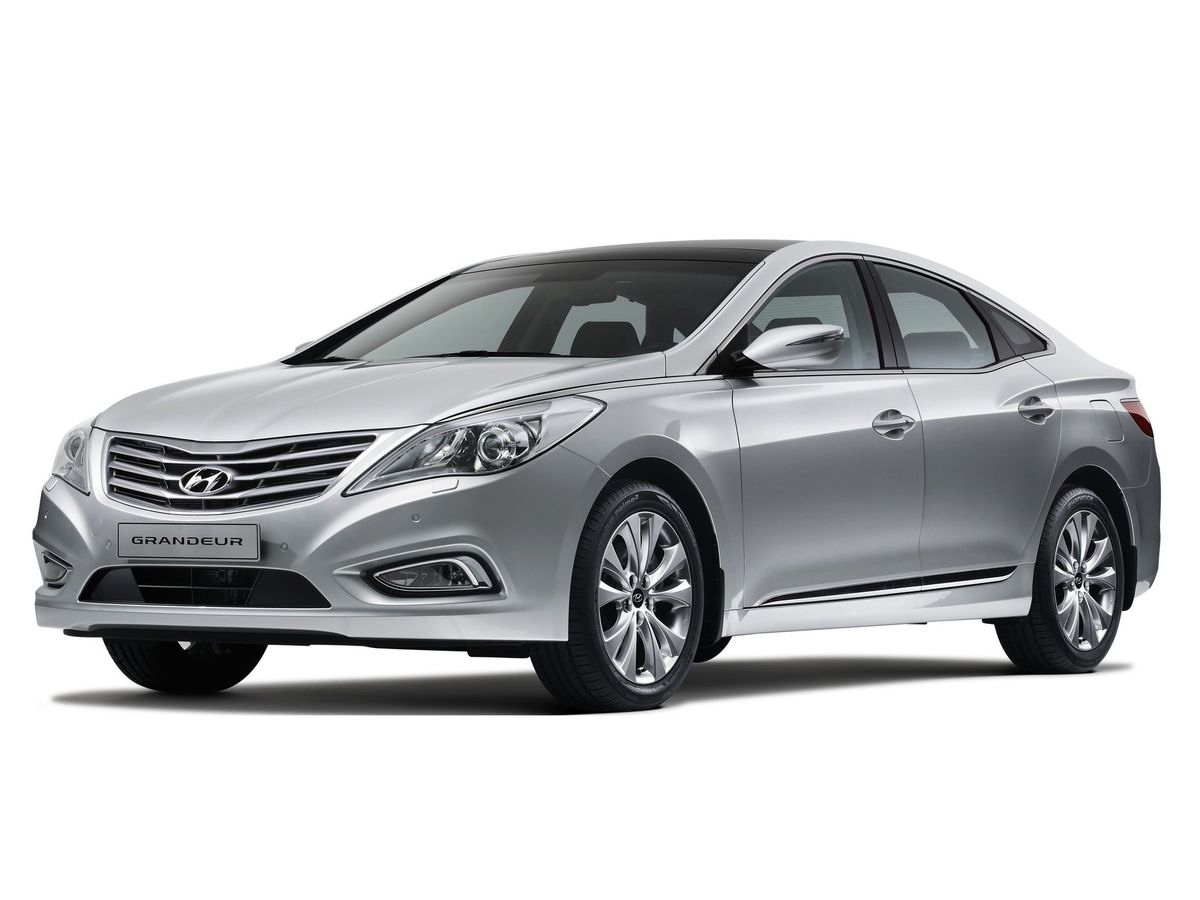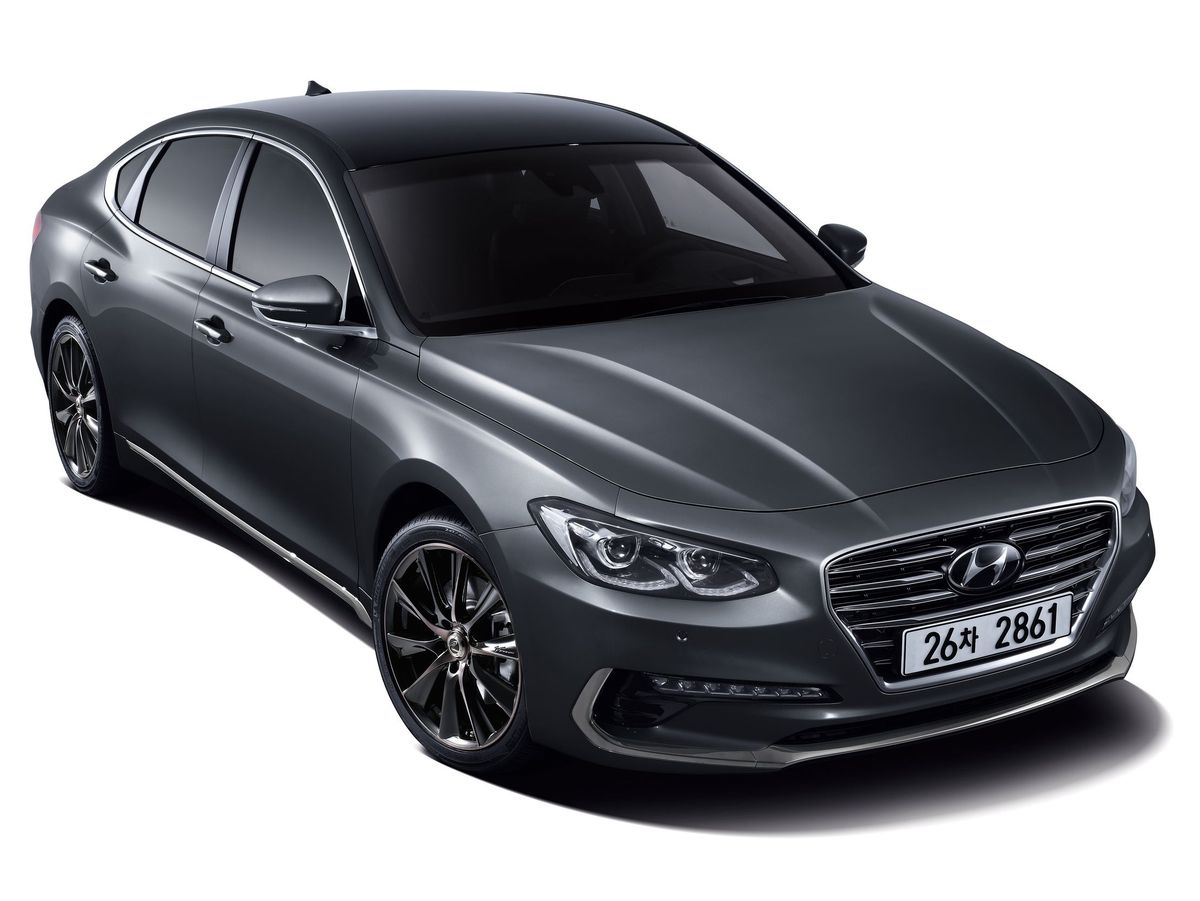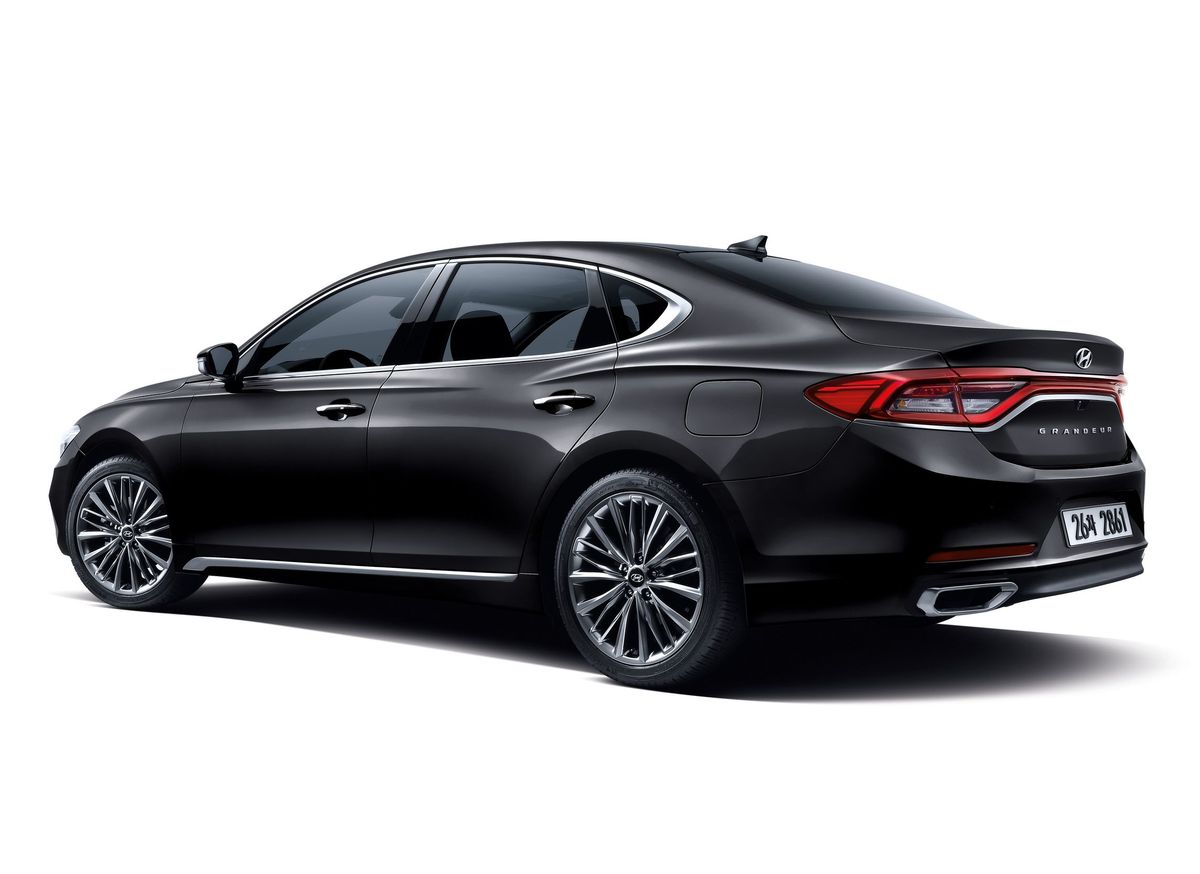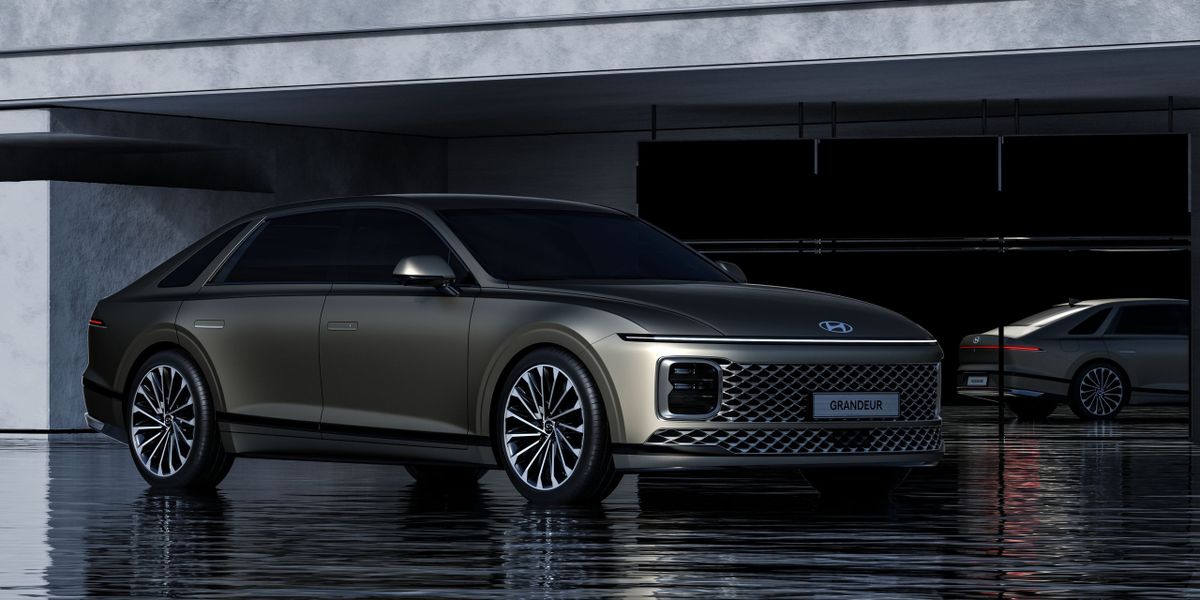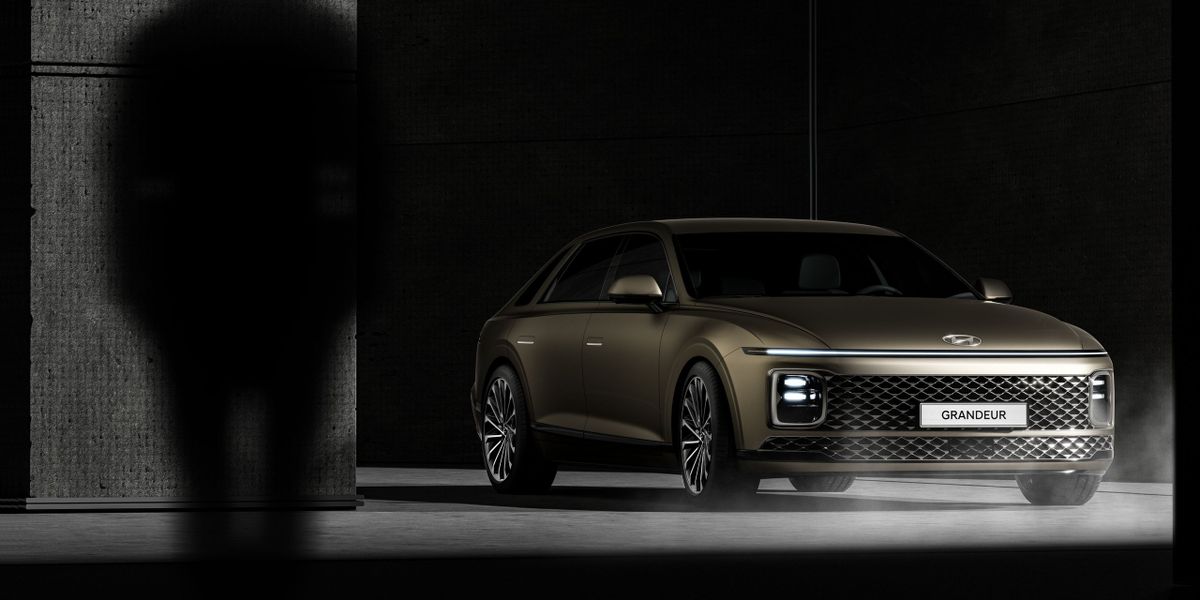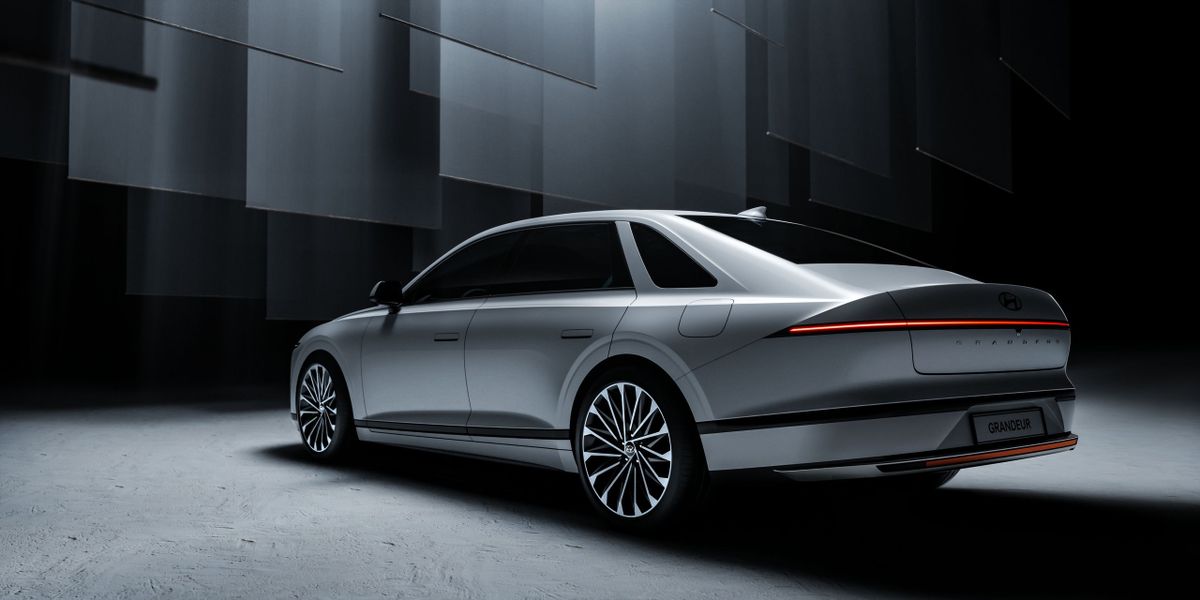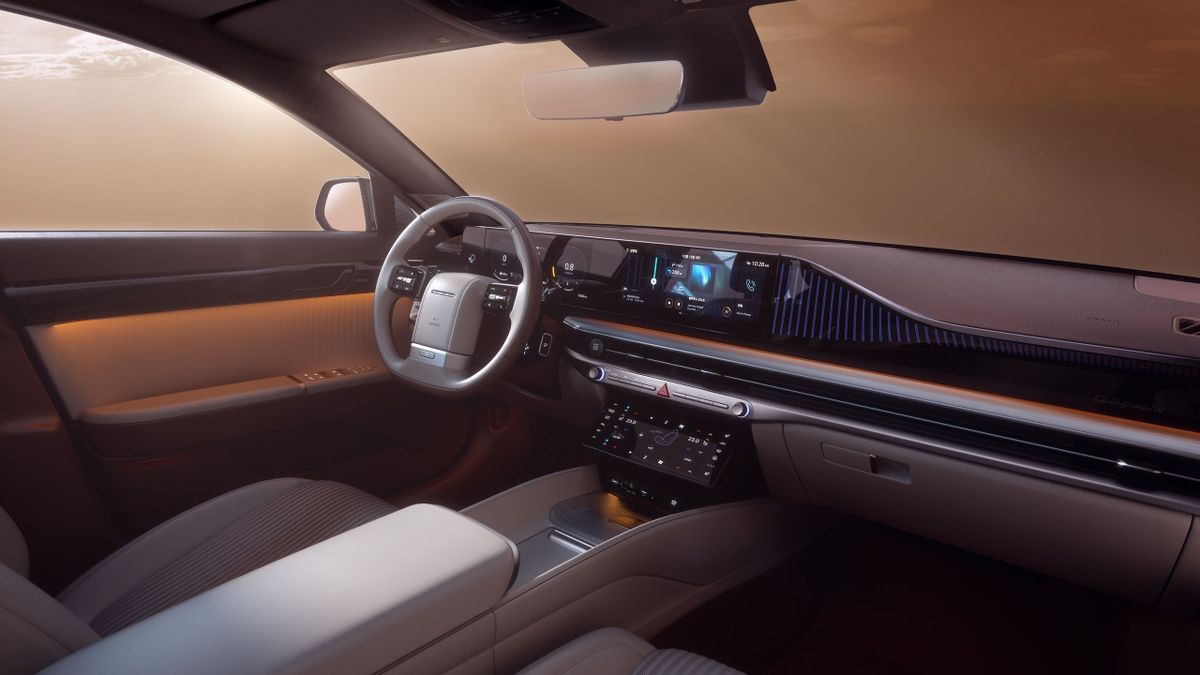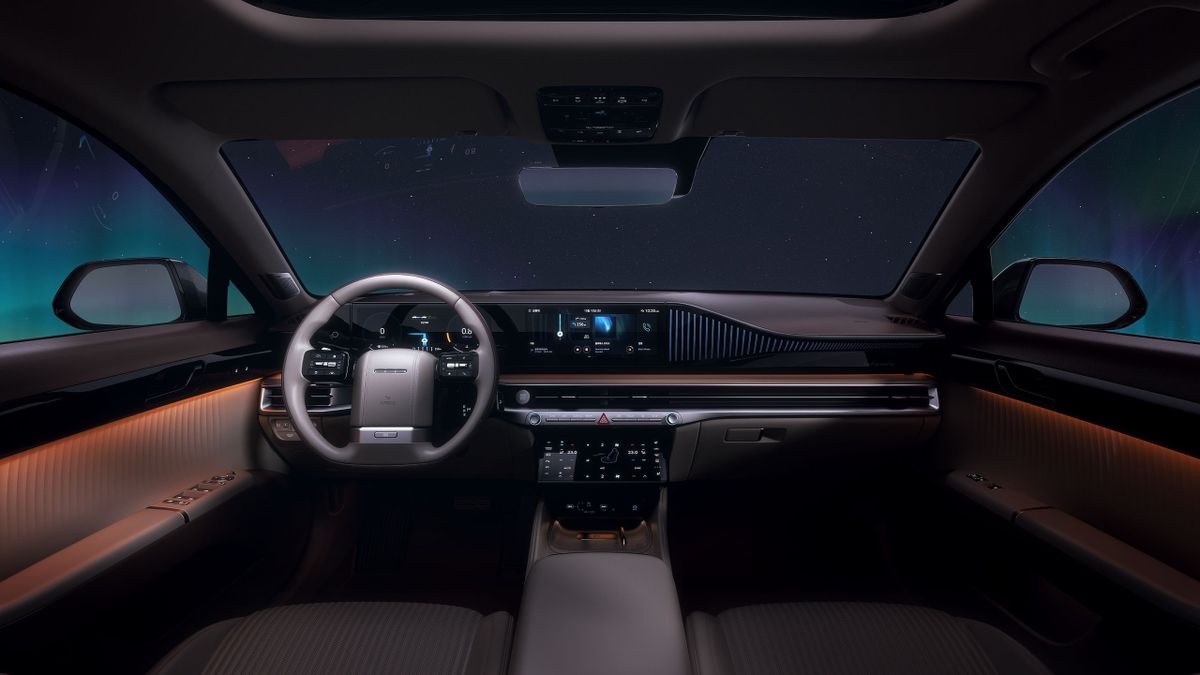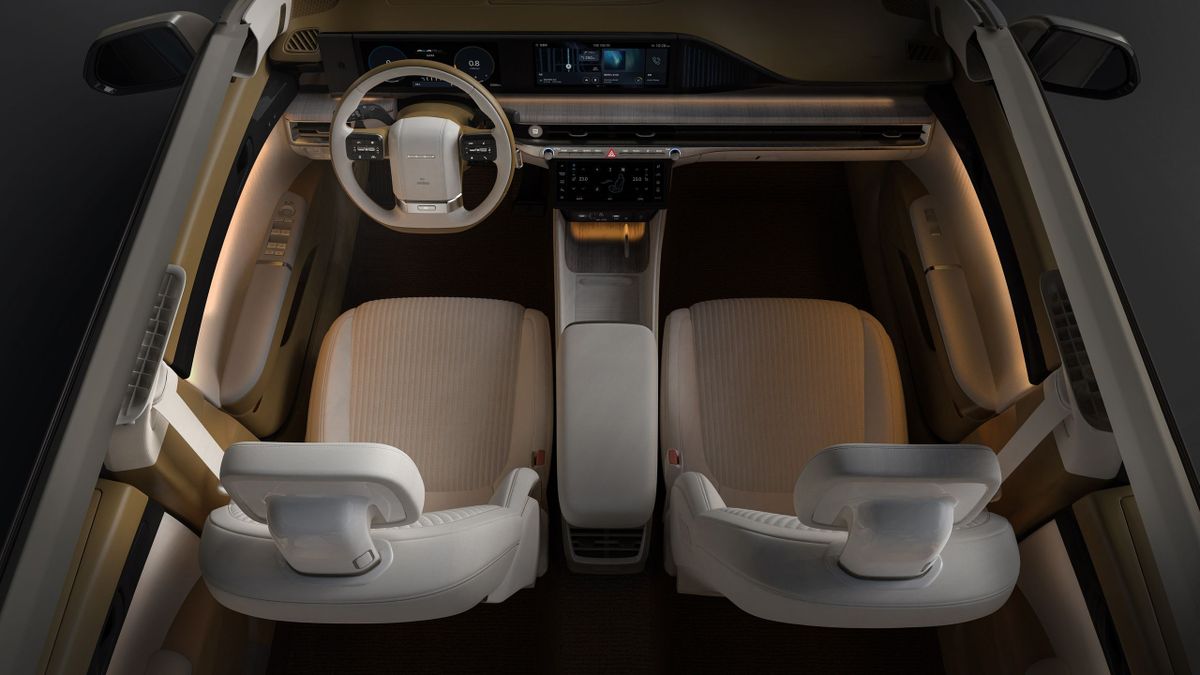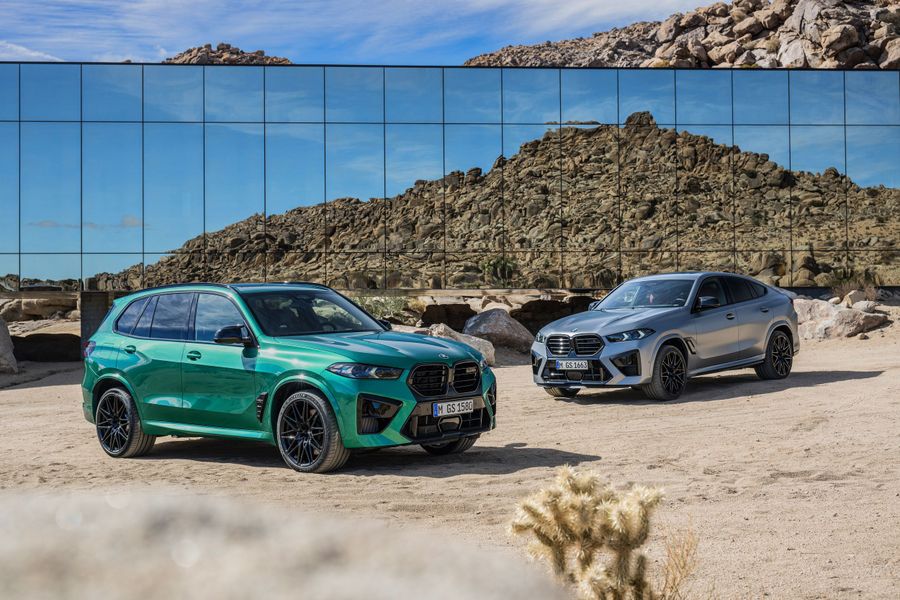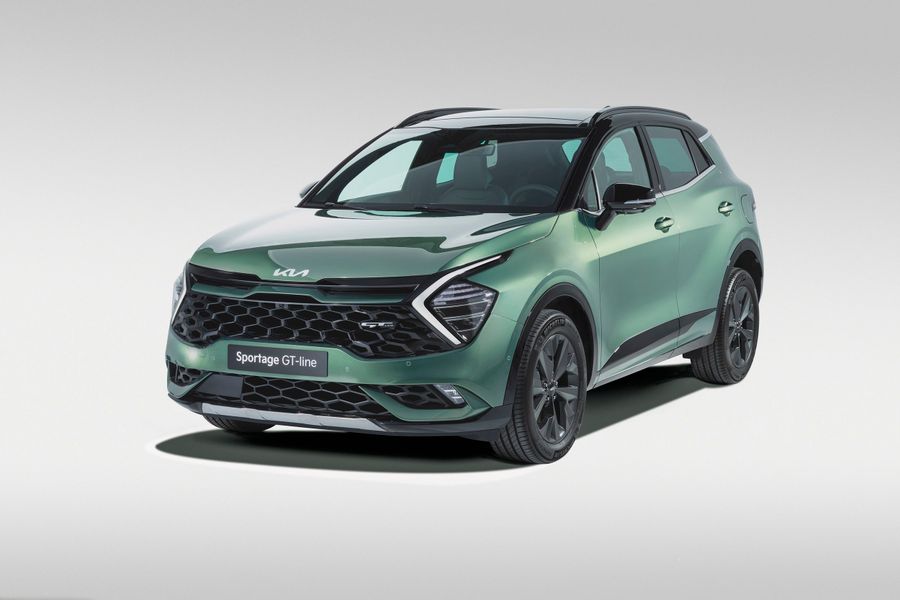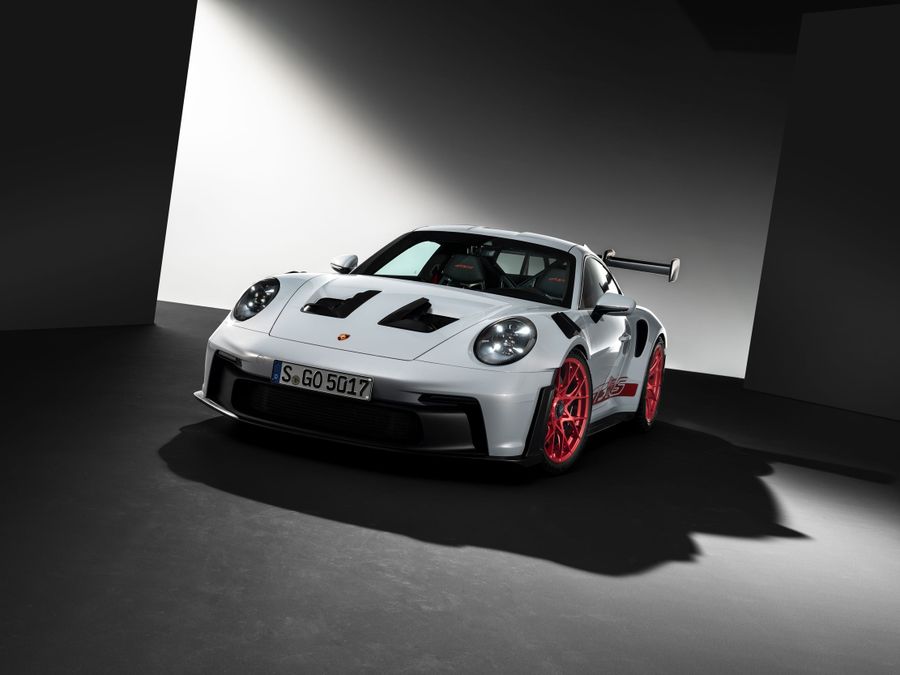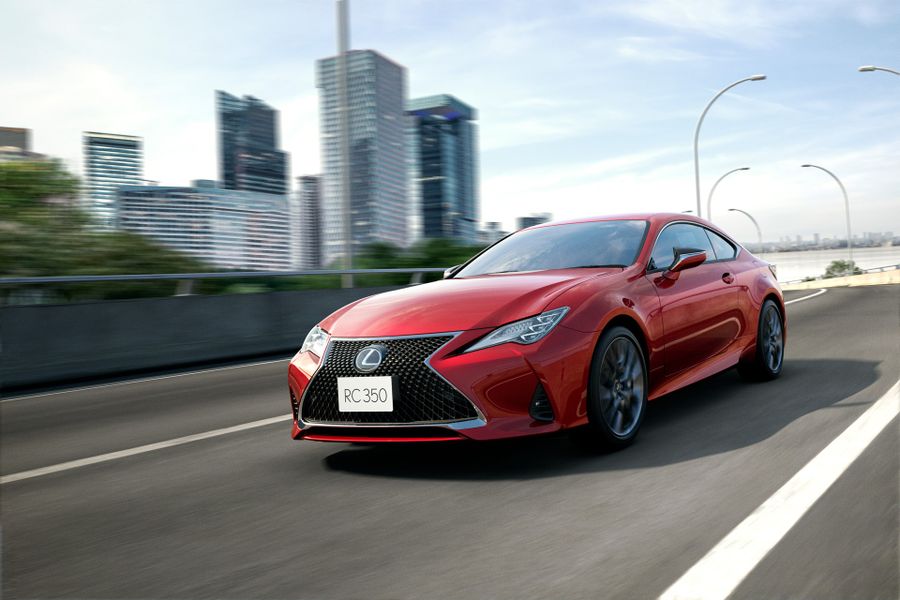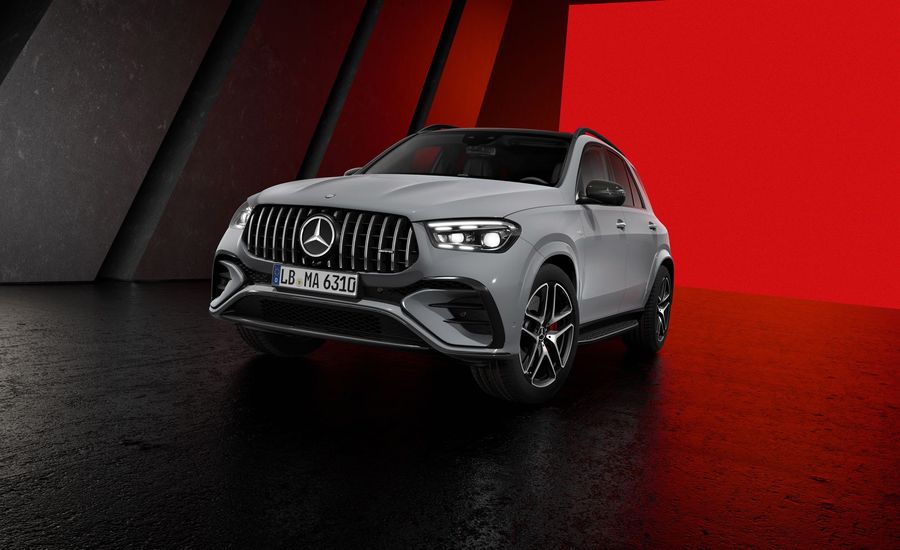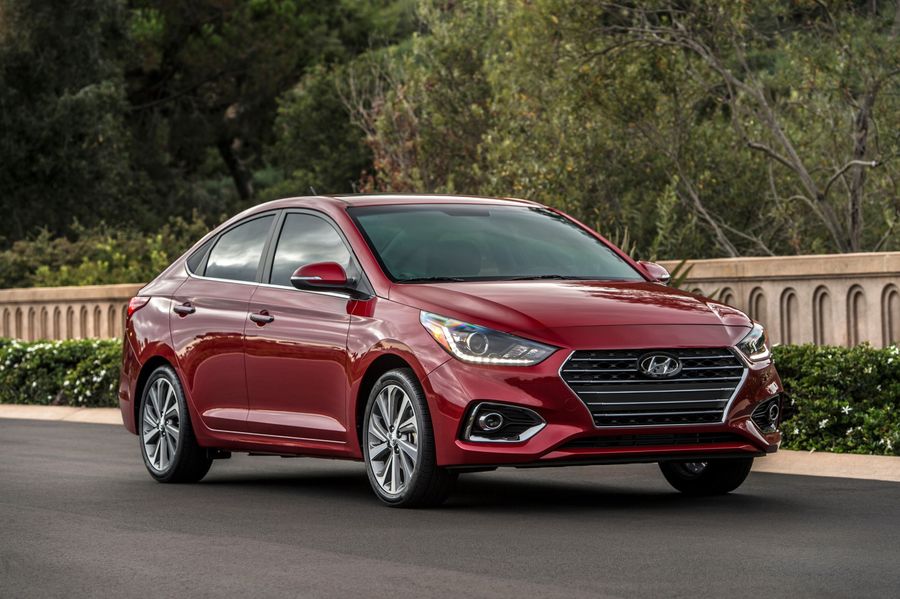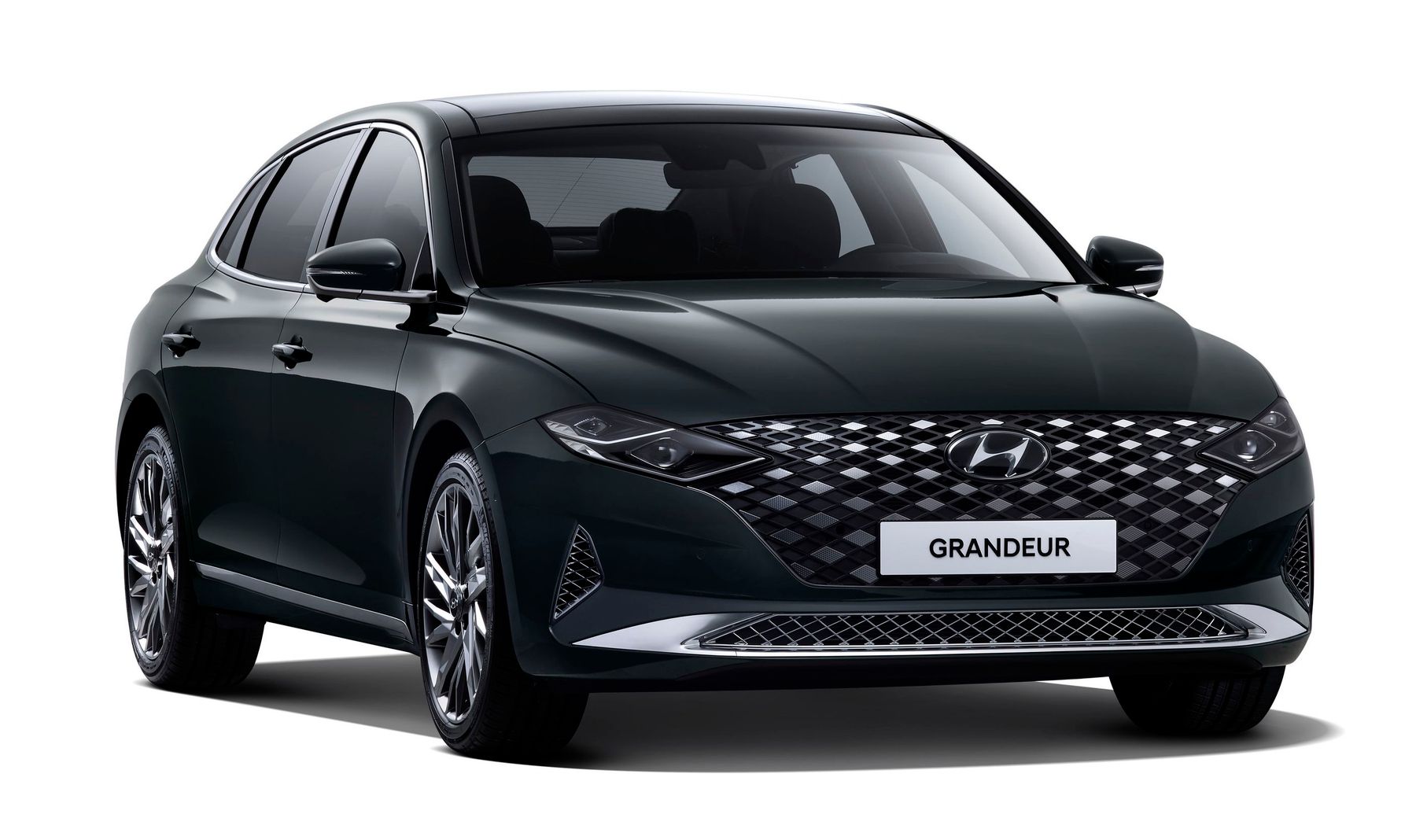
Hyundai Grandeur. Fight for hearts and markets
The Hyundai Grandeur is a full-size luxury sedan that debuted in 1986. It is also known as the Hyundai Azera in many markets. For a long time, the car served as the flagship model of the Hyundai brand, having a huge impact on the entire range of passenger cars of the South Korean brand. But in the age of hatchbacks and SUVs, sedans, especially large ones, are going through tough times. It is becoming more and more difficult for them to find buyers. In 2020, the sixth-generation Hyundai Grandeur, whose name translates as ‘magnificent’ or ‘majestic’, appeared in the world ranking of the best-selling cars in its segment, but already in 2021, the sedan went 4 lines down, in ninth place in the top ten. Perhaps the new seventh generation, released in October 2022, will help the South Korean flagship model restore public interest in the 36-year-old beauty. After all, the dynamic, maneuverable and reliable Grandeur offers its owner luxury for a relatively low price (for a car of this class). The fight for hearts and markets continues!
Model origins
Released in 1986, the first generation was created based on the Mitsubishi Debonair model. First, the Hyundai sedan was equipped with a 2.0-liter Mitsubishi engine, followed by a 2.4-liter engine, and then a 3.0-liter V6. Wide and square, with automatic or manual transmission, the sedan was Hyundai’s flagship model for ten years (from 1986 to 1996). Then there were several attempts to “take away” high status: first Hyundai Dynasty did it, then [Genesis, which later turned into a separate brand](https://autoboom.co.il/en/magazine/genesis. But in 2022, our hero is again the main representative of the passenger model range of the South Korean manufacturer.
Since the public loved the first-generation Grandeur, which became the best-selling big car in South Korea, Japanese and Korean companies have made the second generation together: Mitsubishi was responsible for the units, while Hyundai controlled the body design and interior design. The car was released in September 1992 and was produced until 1998. A wide choice of engines (2.0- and 2.4-liter in-line units, 2.5, 3.0 and 3.6-liter V6 engines), as well as two gearboxes (automatic and manual) led the model to success in the domestic market, where it became a status symbol appreciated by many politicians and wealthy businessmen.
The third generation Hyundai Grandeur was released in 1998 and was produced until 2005. In North America and Japan, the sedan was sold as the Hyundai XG. And while the first two generations were developed jointly with Mitsubishi, the third is entirely designed by Hyundai itself using the technical experience acquired during the first two generations. The car also had a variety of engines from 2 to 3.6 liters. Then Kia used the Grandeur platform to create its Opirus/Amanti model.
The fourth generation Hyundai Grandeur shared its platform with the Hyundai Sonata. The sedan was sold in North America, Europe, Asia, the Gulf States, Latin America, South Africa, Australia, New Zealand and Japan, becoming the most expensive Hyundai model (until the introduction of Genesis in 2008). The car began to be equipped with a new 3.8-liter Lambda V6 engine with a capacity of 265 hp, paired with a 5 or 6-speed automatic transmission with ‘Shiftronic’ manual mode, with acceleration at 100 km/h in 6 seconds and the maximum speed of 249 km/h. In the Korean market, a 2.2-liter VGT CRDI diesel engine was also offered, as well as 2.4-liter Theta and 2.7-liter Mu gasoline units. The 2008 model received the LG navigation system and was the first car to have two screens. By the way, the Grandeur has won a large number of awards in the United States and Canada.
The fifth generation received a brand new design for Hyundai models of these years (2011-2016) called ‘Liquid Sculpture’. The car was equipped with gasoline engines ranging from 2.4 to 3.3 liters, as well as a 2.2-liter diesel engine. Also, in 2013, a hybrid version based on a 2.4-liter engine appeared. The rich Premium version, among other things, boasted adaptive cruise control and a semi-automatic parking assist system.
The sixth generation Hyundai Grandeur was launched on October 27, 2016. The car did not go to the United States due to declining sales. For the same reason, experiments with modifications began: in March 2017, the hybrid version reappeared, and the diesel version, on the contrary, was discontinued in 2018. Despite the failure in America, the Grandeur remained the car best-selling in its class in the South Korean market: in 2017, 132,000 copies were sold, in 2018 - 110,000 copies.
New Grandeur 2022
Introduced in October 2022, the new Hyundai Grandeur became the brand’s third model, made in the new futuristic space style. The seventh incarnation of the large sedan is truly impressive: a narrow LED strip separates the hood and the bumper, which incorporates the already familiar double-deck optics from previous models. At the back, a similar red stripe is responsible for all the necessary functions. The car combines modernity (retractable door handles) with traditional elements of the past (additional windows near the rear pillars, which were present on the first Grandeur).
‘The seventh generation Grandeur pays homage to the past and at the same time embodies the desire to move forward. We are setting a new standard in the premium sedan market’
Inside, there are retro motifs reminiscent of the car’s origins: a deeply redesigned interior from the 1980s, complete with a digital dashboard and multimedia display, with the third screen for climate control. The chic materials are sure to appeal to traditional Korean buyers, still loyal to the big sedan, as well as customers in the Middle East. The new Hyundai Grandeur 2022/2023 is known to share the platform with the new sedan Kia K8, which was released in the spring of 2021. This means that the model will still be front-wheel drive and will have engines from 1.6 liters (turbo, 177 horsepower) to 3.5 liters (direct injection, 300 horsepower). And as the car has become larger, it can now offer more space in the cabin than its predecessor.


